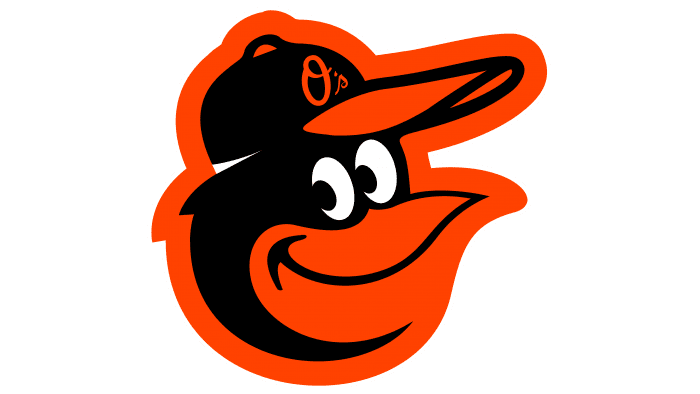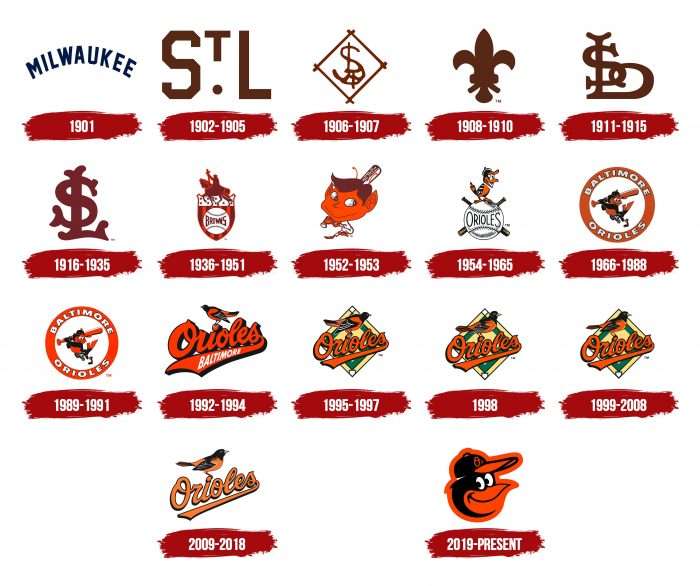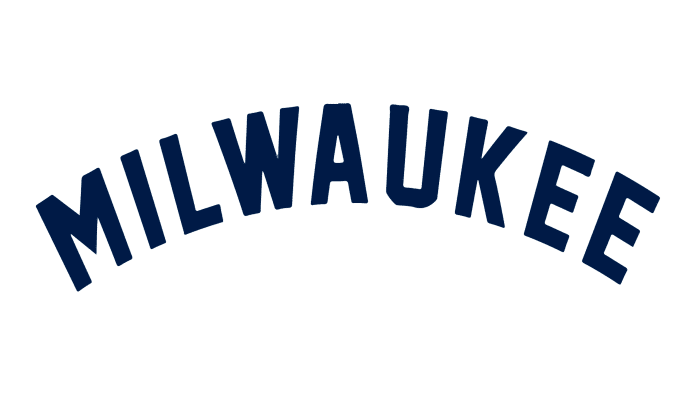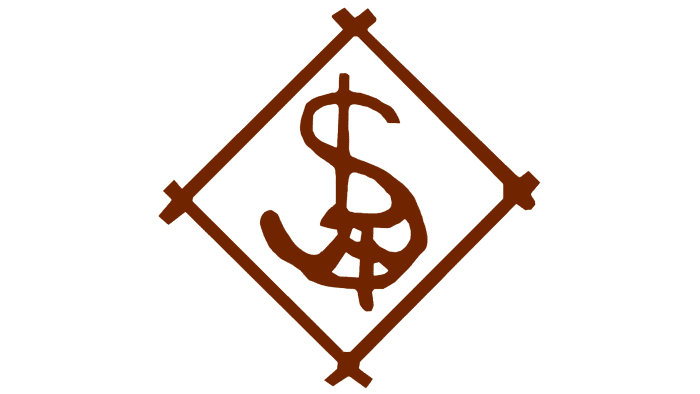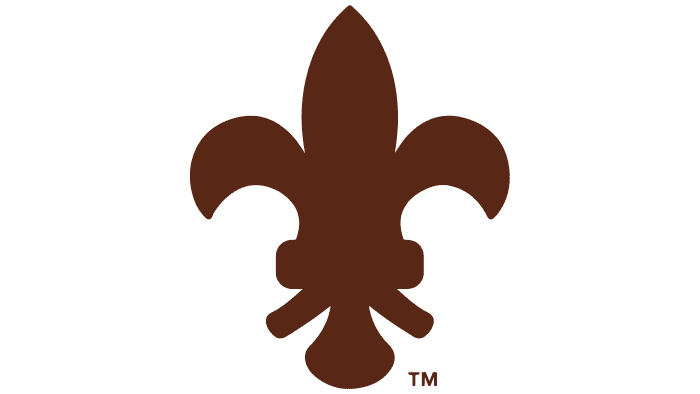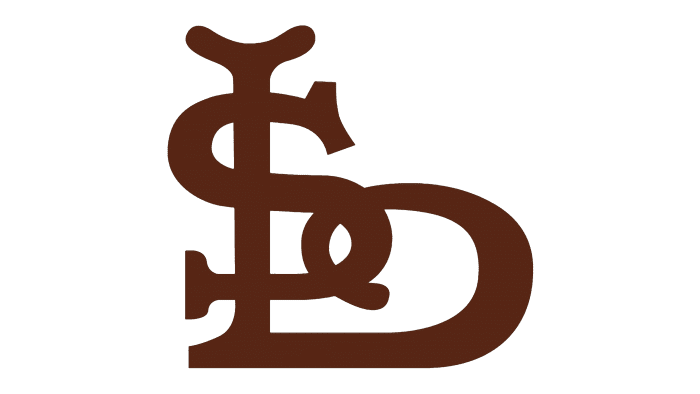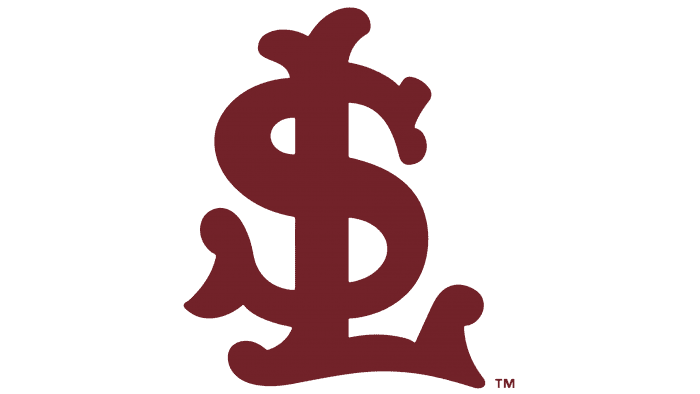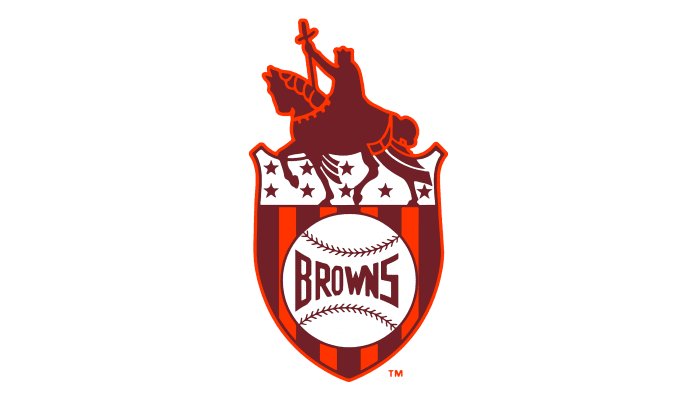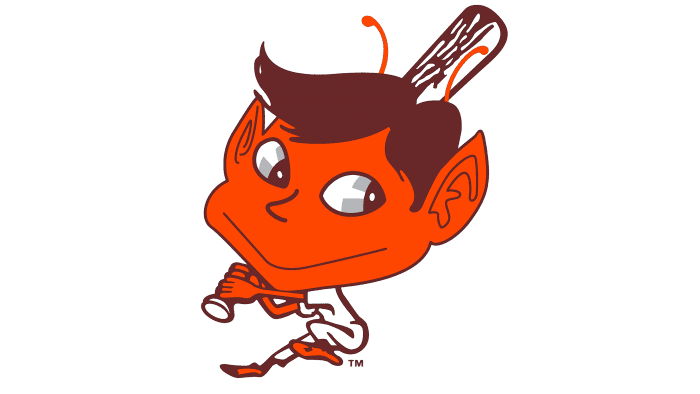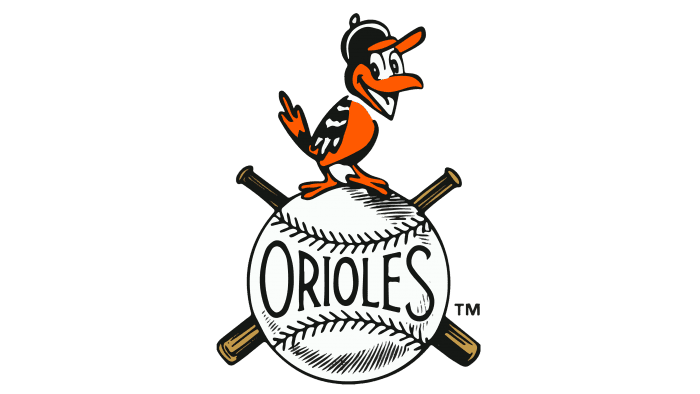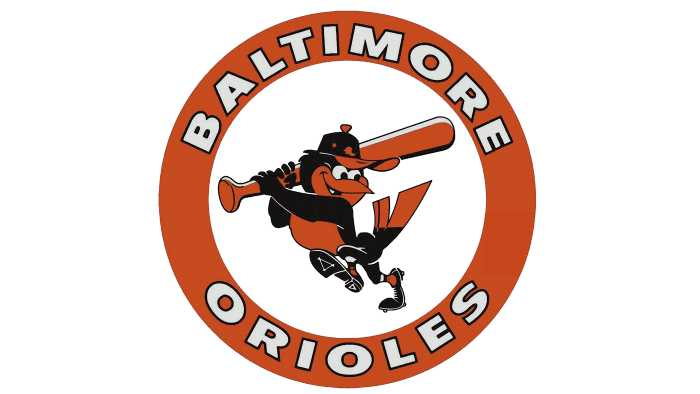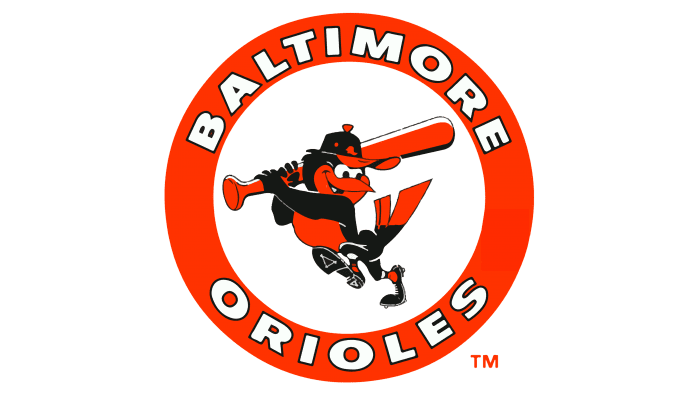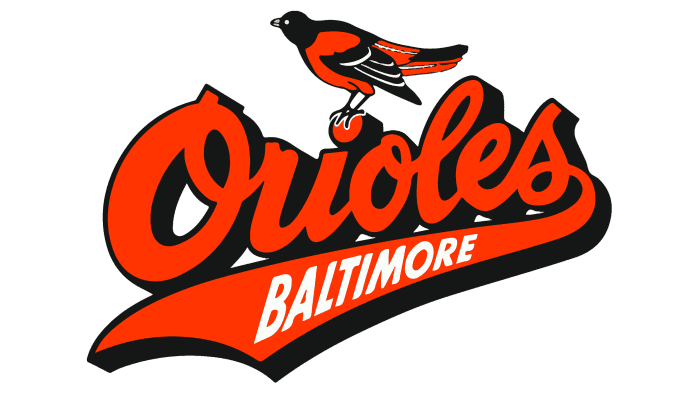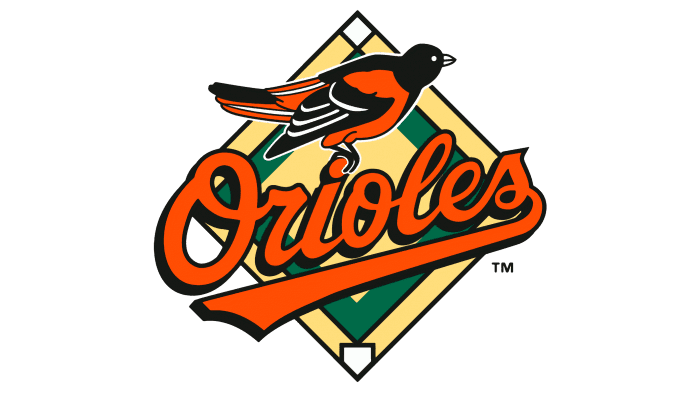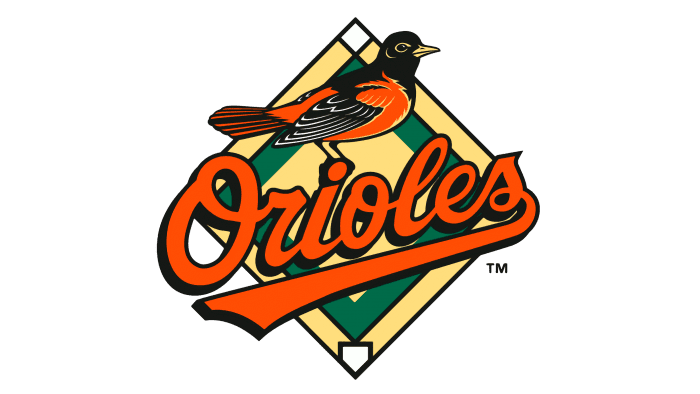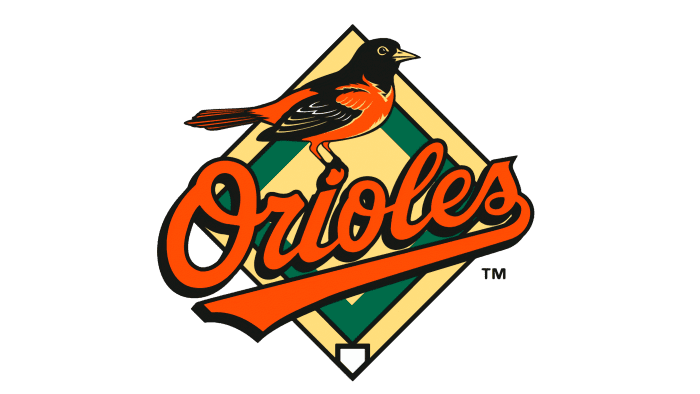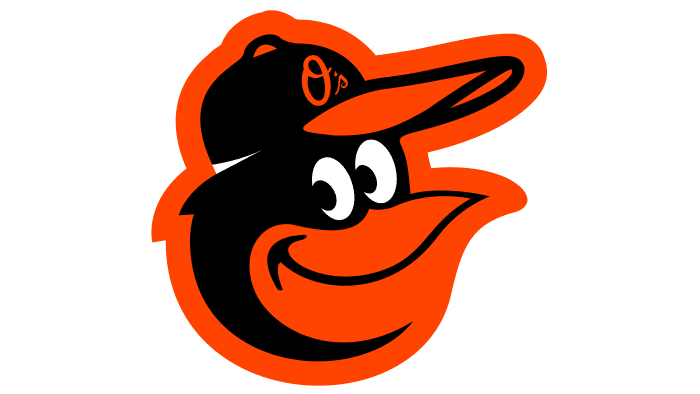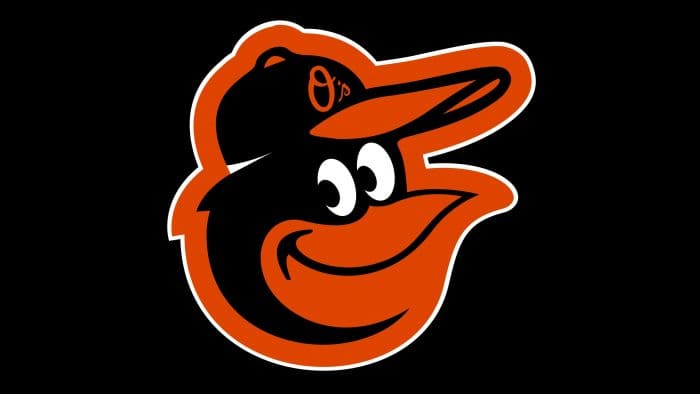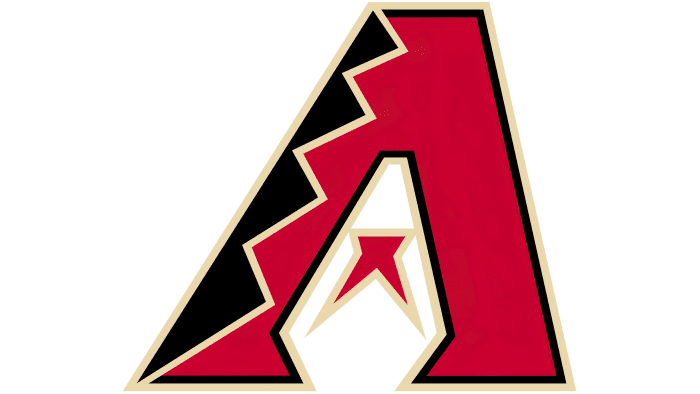The professional baseball club, nicknamed after Maryland’s official state bird, has reflected its name in the emblem. Designers rendered the Baltimore Orioles emblem colorful and cartoonish to appeal to fans of all ages.
Baltimore Orioles: Brand overview
In Milwaukee, Wisconsin, in 1901, the Baltimore Orioles’ current history got its start. Originally called the Milwaukee Brewers, the team joined the American League as one of the eight founding members. But the squad was only in Milwaukee for one season. The team relocated to St. Louis in 1902, when it adopted the St. Louis Browns as its new moniker. The league’s ambition to franchise in a bigger city drove this relocation. The franchise stayed in St. Louis for the following fifty-two years, but the National League’s more successful St. Louis Cardinals continued to steal the show.
The St. Louis Browns’ sole major accomplishment in St. Louis came in 1944 when they advanced to the World Series and won the American League pennant. But they dropped six games to the St. Louis Cardinals. Bill Veeck, the team owner, tried to relocate the franchise to Baltimore in 1953, but other team owners opposed the plan. Veeck was compelled to sell the franchise to Clarence Miles and his group of Baltimore businessmen.
The team was successfully relocated to Baltimore in 1954 and given the new name Baltimore Orioles by its new owners. The choice of the name honors the official state bird of Maryland. With this change, the franchise entered a new phase and progressively developed into a powerful corporation.
The team had a run of success in the 1960s. After going through four games against the Los Angeles Dodgers, the franchise won its first World Series in 1966. During this time, pitchers Jim Palmer, Frank Robinson, and Brooks Robinson were all important players.
The club’s “golden era” was the 1970s. The team won the World Series in 1970 and the American League pennant in 1969, 1970, 1971, and 1979. Earl Weaver’s inventive team management style helped him become a baseball icon.
The team defeated the Philadelphia Phillies in five games to win its third World Series in 1983. Strong pitching led by Jim Palmer and a potent offense with players like Eddie Murray and Cal Ripken Jr. contributed to this victory.
The franchise went through one of its worst runs from 1988 to 1991; it began the 1988 season with an MLB record 21 straight losses. Playing in 2,131 consecutive games, Cal Ripken Jr. eclipsed Lou Gehrig’s “unbreakable” record in 1995. This accomplishment attracted national notice and contributed to baseball’s resurgence in popularity following the 1994 strike.
The team returned to the postseason from 1996 to 1997, taking home the division crown in 1997 and the wild card in 1996. Both times, though, the team lost in the American League Championship Series.
Following hardship, the club saw success again from 2012 to 2016, making the playoffs thrice in five years. For the first time since 1997, the squad took home the AL East division championship in 2014.
The team started a significant reconstruction in 2018 and 2019, exchanging older players for talented youngsters. Although disappointing performances marred the regular season, this time, the team set the stage for future growth.
Despite continuing to rebuild, the club made improvements in 2021. Fans were encouraged by the potential displayed by young players such as John Means and Cedric Mullins, who offered hope for future success.
The Baltimore oriole, the state bird of Maryland, inspired the team’s name. As a result, it has served as the team’s principal emblem element and symbol since 1954. The only season without birds in the team’s history was 1963 when the orange letter “B” was used as the logo. After 23 seasons with no modification to the emblem, the team’s hats began to feature a cartoon bird in 1966. The crew removed it in 1989 and replaced it with a more lifelike bird.
Since 1979, the Oriole bird has served as the team’s mascot. In 2012, the club unveiled an updated rendition of the cartoon bird. In 1993, Baltimore industrialist Peter Angelos sold the club for the highest price ever for a sports team—a record $173 million.
Meaning and History
The seventeen logos that the Baltimore Orioles franchise has changed differ from each other in many elements and styles. Some are dominated by monograms, others by round stamps with text, and others by a bird. This is because the club changed several owners, cities, and names. Each stage was accompanied by a logo redesign – from minimal adjustments to large-scale changes.
What is Baltimore Orioles?
The Baltimore Orioles is a baseball team owned by American lawyer Peter G. Angelos (as of 2021). It participates in the American League East and has quite successfully competed in Major League Baseball. Its home stadium is called Oriole Park at Camden Yards.
1901
In the early 20th century, baseball in the USA was gaining popularity, and teams were actively forming their identities. The “Milwaukee Brewers” were no exception. Using a simple and clear logo with the city’s name reflected the team’s commitment to clarity and transparency. This period was also characterized by a drive to create strong connections between sports teams and their hometowns. The first “Milwaukee Brewers” logo was simple and concise: it featured the inscription “MILWAUKEE” in blue. The logo with the “MILWAUKEE” inscription symbolized this connection, showcasing the team’s pride in their city and its residents. It was a tribute to the city and the people supporting the team. Using the city’s name in the logo emphasized the importance of local identity and attachment to their roots.
The emblem’s font was sans-serif, with large and clear letters, ensuring good readability and recognizability. The inscription was done in a semi-circle, giving the logo a sense of dynamism and movement.
The primary color of the logo was blue. This color is associated with trust, confidence, and stability, which was fitting for a team aiming to establish itself in the sports world.
1902 – 1905
In 1902, the team was known as the “St. Louis Browns,” and its emblem featured the brown abbreviation of the city, “St. L.” The emblem’s city abbreviation and brown color reflected the team’s commitment to clarity and stability. The simplicity and conciseness of the design mirrored an era when teams aimed to identify with their location.
The logo’s font was geometric, sans-serif, with large and clear letters. The letters had strict lines and angles, giving them an appearance of strength and reliability. The period after “St.” emphasized formality and precision.
The brown color of the emblem is associated with earth and stability, which is important for a team aiming to build a strong foundation and achieve consistent results in sports.
1906 – 1907
The logo features an original and unique design used on the team’s uniforms during the 1906-1907 seasons. This period marked a time of change and new beginnings for the St. Louis Browns. The logo incorporates the letters “STL,” which interlock within a diamond shape, symbolizing a baseball field. The logo’s primary color is brown, which is characteristic of the St. Louis Browns during that period.
The font of the “STL” letters has elegant and flowing lines, creating the impression of handwritten text. This style emphasizes the elegance and uniqueness of the design. The interlocking letters add complexity and depth to the logo, making it visually appealing and memorable. The brown color of the logo symbolizes stability, strength, and reliability.
1908 – 1910
The new emblem is designed as a stylized brown fleur-de-lis. This symbol has deep historical roots and is connected to the French heritage of St. Louis.
The fleur-de-lis is one of the most well-known symbols in French culture, often associated with royalty and nobility. In the context of the team’s logo emphasizes pride in the city and its rich history, as well as the team’s aspiration for greatness and success.
1911 – 1915
The fifth logo featured a combination of “STL” intertwined letters in brown.
1916 – 1935
In 1916, the team changed its emblem again, removing the letter “T” and leaving “SL” in brown. The letters were blurred as if painted with watercolor. The “St. Louis Browns” used this logo until 1935, when they stopped using letters and the city name in their logo.
1936 – 1951
In 1936, when this logo was introduced, baseball had firmly established itself in American culture and society. Teams actively sought to create unique and memorable emblems reflecting their identity and connection to the local community. This period’s “St. Louis Browns” logo features a complex heraldic shield. At the top of the shield is a statue of Saint Louis (after whom the city of St. Louis is named) on a horse with a raised sword. The upper part of the shield is adorned with eight brown stars on a white background, while the lower part has orange and brown stripes. In the shield’s center is a white baseball inscribed “BROWNS.”
The emblem, featuring the statue of Saint Louis on the shield, perfectly fits this trend of connecting with the team’s hometown, blending the city’s historical heritage with the team’s athletic achievements. The statue of Saint Louis on horseback emphasizes the connection to the city’s historical past and its founders. The sword in the statue’s hand symbolizes the team’s strength and determination. The eight stars might represent significant events or achievements of the team at that time.
The font used for the “BROWNS” inscription on the baseball has a unique style with geometric elements and angular lines, making it expressive and memorable. This font underscores the team’s determination and confidence.
The logo’s color palette includes white, black, orange, and brown. White symbolizes purity and honesty; black represents strength and determination; orange conveys energy and enthusiasm; and brown represents stability and reliability. These colors harmoniously blend to create a visually appealing and symbolically rich logo.
1952 – 1953
In the early 1950s, the “St. Louis Browns” updated their image, making it more modern and appealing to a wider audience. After 15 years of using the previous logo, the team management concluded that a complete change in visual style was necessary. The “St. Louis Browns” logo from 1952 to 1953 features a cartoonish depiction of an orange elf’s head. The elf is shown with a mischievous expression, dressed in a baseball uniform and holding a bat. The elf’s ears are large and pointed, emphasizing its fantastical nature. The elf’s head is disproportionately large compared to its body, giving the logo a cartoonish and memorable appearance. The choice of a cartoon elf reflected the spirit of the time when cartoon characters and bright colors were popular in culture and advertising. This logo helped the team stand out among competitors and be remembered by fans with its unique and cheerful image.
The elf in the logo symbolizes playfulness, cunning, and lightheartedness. This depiction reflects the team’s desire to be more accessible and fun for fans, attracting adults and children. The choice of an elf hints at the magic and surprise that the team brings to the field.
Although the logo does not include text, the elf image’s style is bright and memorable. The cartoonish style, with large elements and bright colors, draws attention and makes the logo easily recognizable.
The primary colors are orange and brown. Orange symbolizes energy, fun, and warmth, creating a positive impression of the team. Brown adds an element of stability and reliability. Together, these colors create a harmonious and attractive visual image.
1954 – 1965
After moving to Baltimore, the team changed its name to the “Baltimore Orioles,” which required the development of a new logo. The logo used for the first nine seasons depicts a smiling cartoon oriole, colored in black, orange, and white, climbing on a white baseball. Behind the baseball are two crossed bats, and in the center of the ball is the word “ORIOLES.” The cartoon style and bright colors were popular at the time and helped attract the attention of new fans. The new logo was part of a strategy to create a new team identity and strengthen their position in the baseball league.
Main elements of the logo:
- Oriole: The team’s symbol, reflecting the name and regional identity.
- Baseball ball: A sports symbol emphasizing the team’s association with baseball.
- Crossed bats: A symbol of the game, adding dynamism and movement to the logo.
The oriole symbolizes the team’s name, making the logo clear and recognizable. The oriole’s smiling expression gives the logo a friendly and welcoming look, helping to create a positive image for the team. The baseball and crossed bats indicate the team’s sport, emphasizing their affiliation with baseball.
The word “ORIOLES” is written in large, sans-serif letters, making it easily readable and noticeable. The font style is simple, highlighting the main symbols and images rather than intricate decorative elements.
The primary colors are black, orange, and white. Black symbolizes strength and determination, orange represents energy and enthusiasm, and white signifies purity and honesty. Together, these colors create a bright and contrasting image that is easily memorable.
1966 – 1988
In 1966, the team’s owners hired assistants to create an appealing bird character. The logo, dedicated to the team’s tenth anniversary, was designed by Stan Walsh, who also created famous logos for “Hamms Bear,” “Snap, Crackle, and Pop.” The logo features a red oriole in a black cap and shoes, swinging a red bat within a red circle with the inscription “Baltimore Orioles.” Introducing a cartoon oriole character was part of a strategy to strengthen the team’s image and attract new fans.
The oriole character in the logo symbolizes the team and adds an element of friendliness and appeal. The smiling bird with a bat creates an image of a fun and energetic athlete, helping to draw attention and win the fans’ affection. The circular logo with the “Baltimore Orioles” inscribed emphasizes the team’s connection to Baltimore.
The font used for the “Baltimore Orioles” inscription is sans-serif and bold, making it easily readable and noticeable. The font style is simple and direct, highlighting the main focus on the oriole and the bat.
Red symbolizes energy, passion, and determination, while black represents strength and confidence.
1989 – 1991
The next Baltimore Orioles logo differed slightly from the previous one. In 1989, the team simply changed the colors to brighter shades of black and orange.
1992 – 1994
In 1992, the “Baltimore Orioles” team changed their logo by removing the circle and depicting a realistic orange oriole with black wings perched on the letter “i” in the word “Orioles.” Inside the oriole’s orange tail, the word “Baltimore” was written in white. Removing the circle and adding a realistic oriole symbolized the team’s move toward a new image and renewal. This step helped strengthen the “Baltimore Orioles” brand and attract the attention of new fans.
The bird perched on the letter “i” adds dynamism and uniqueness to the logo. The oriole symbolizes energy, agility, and beauty.
The word “Orioles” is written in a large, elegant font that is easy to read and remember. The combination of black and orange colors creates a bright contrast, making the logo more noticeable. The white “Baltimore” inscription within the oriole’s tail is in a simple and clear font, emphasizing the city’s importance. Orange symbolizes energy, passion, and enthusiasm; black represents strength and confidence; white signifies purity and openness.
1995 – 1997
The logo from 1995 to 1997 features a bright orange, italicized “Orioles” inscription. Sitting on the letter “i” is an oriole bird, now facing to the right. The logo’s background is designed as a baseball field diamond, colored in yellow and green.
The font of the “Orioles” inscription has a free and flowing style, giving the logo a sense of dynamism. The orange color of the inscription highlights the team’s name. The baseball diamond background symbolizes the playing field. The green color is associated with the grass on the baseball field, and the yellow represents sunlight.
1998
The emblem underwent minor changes for the 1988 season. The only difference was the design of the bird, which very much resembled a real orange-black oriole.
1999 – 2008
The fifteenth emblem of the Baltimore Orioles remained the same, the only change being the improved color and more precise details of the original image.
2009 – 2018
In 2009, the Baltimore Orioles team changed its logo. The baseball field background was removed, and the red color was replaced with orange. The black-white-orange oriole remained, but its image became less vibrant than the previous logo.
Removing the background with the baseball field and replacing the red color with orange emphasizes the team’s aim for modernization and renewal of its image. The logo becomes more minimalist and memorable, which helps strengthen the brand.
The word “Orioles” is written in a large, elegant font that is easy to read and remember. Using black, white, and orange colors creates a bright contrast, making the logo more noticeable.
Orange symbolizes energy, passion, and enthusiasm; black represents strength and confidence; white signifies purity and openness.
2019 – today
In 2019, the Baltimore Orioles introduced their latest logo. This logo is not a radical update but a reworking of the version from 2012 to 2018. The developers took an alternate logo, previously used for promotional purposes, and established it as the club’s primary visual attribute.
The logo features an anthropomorphic oriole, specifically its head, rather than a realistic depiction. The bird’s head is set against a white background and is shown in a semi-profile view. The oriole’s face is smiling, with the tip of its beak slightly curved. The expression is pleasant and friendly, symbolizing the team’s kindness and hospitality.
The logo also includes a dark-colored baseball cap with a light brim. On the brim is an embroidered capital letter “O” and a lowercase “s,” adding uniqueness and recognizability to the logo. The font used for the letters is elegant and easily readable, making the logo attractive and memorable.
Orange symbolizes the team’s energy, enthusiasm, and passion. Black adds solidity and confidence to the logo, while white represents purity and openness. Together, these colors create a bright and friendly image that is easily remembered and attention-grabbing.
Baltimore Orioles: Interesting Facts
The Baltimore Orioles are a baseball team with a long history dating back to the 1800s.
- Start in 1954: Even though the Orioles officially became a team in Baltimore in 1954, their roots go way back. They started as the Milwaukee Brewers in 1901, became the St. Louis Browns, and finally moved to Baltimore.
- Famous Stadium: Since 1992, they’ve played at Oriole Park at Camden Yards. This place is special because it mixes old-style looks with new comforts, inspiring other stadiums to do the same.
- Top Players: The club had three players who were the best in batting average, home runs, and RBIs in the same season: Frank Robinson in 1966, Brooks Robinson, and Cal Ripken Jr. They showed how talented team players could be.
- Cal Ripken Jr.’s Record: From 1982 to 1998, Cal Ripken Jr. played 2,632 games, breaking a record and earning him the nickname “Iron Man.”
- Winning Big: They won the World Series thrice—in 1966, 1970, and 1983. The 1966 win was huge because they beat the Los Angeles Dodgers when no one thought they could.
- Pitching Strategy: In the late 1950s and early 1960s, the team started using relief pitchers differently, which led to the bullpen strategy teams use today.
- Birdland: Fans and the atmosphere at their games are lovingly called “Birdland.” It’s all about loving the team and enjoying baseball together.
- Mascot: The team’s mascot is the Oriole Bird, a big hit with fans and a symbol of Maryland, where the team is from.
- Famous Players: Some players, like Cal Ripken Jr. and Brooks Robinson, are in the Baseball Hall of Fame. They’re remembered as some of the best.
- Helping Out: The club helps their community a lot through their charity work, supporting children, schools, and health programs.
The team has a rich history of great baseball, community involvement, and important game changes.
Font and Colors
Almost all Baltimore Orioles branding is associated with the oriole – with its name or drawn image. This is because the franchise is named after the official mascot of the state of Maryland, and since 1954, it has been part of the logo structure. True, there were several periods initially when the oriole was not present on the logo at all. Its appearance occurred in the middle of the last century: it was depicted as a cartoon character with a baseball theme. Since that time, the bird has never left the emblem. A realistic image was approved in 1992.
If the modern version has no text (only two letters—”O” and “s”), early versions have an inscription. In some cases, a sans-serif chopped font is used; in others, a handwritten font with flowing symbols is used. The word “Orioles” is positioned diagonally and reads from bottom to top. All letters are supplemented with shadows, making the font look voluminous. The signs are also handwritten in the modern logo and have thin outlines.
The team’s official color palette is black, dark orange, gray, and white. Previously, it also included dark blue, brown, brick red, green, and beige.
FAQ
When did the “Baltimore Orioles” change their logo?
The Baltimore Orioles logo was last updated in 2019. Now, it looks like the black-orange head of an anthropomorphic oriole in a baseball cap. This symbol appeared much earlier: it was used as an alternative until the team’s management decided to make it the primary one.
Why is “Baltimore” called “Orioles”?
The baseball club was named after the real oriole, classified as a separate species – the Baltimore oriole (Icterus galbula). It is one of the symbols of the state of Maryland, where the sports team is based. As for the name, the bird got its name due to the black-orange plumage of the males, reminiscent of the coat of arms of the first owner of Maryland.
Will the “Orioles” change their logo?
The sports team last updated its logo in 2019. Whether further changes are planned is unknown; the Baltimore Orioles’ management has not yet commented on this matter.
What is the name of the Baltimore Orioles mascot?
The Baltimore Orioles symbol’s name is not original. It’s called the Oriole Bird. It’s an anthropomorphic character that looks like a huge black-orange bird in a baseball cap.
